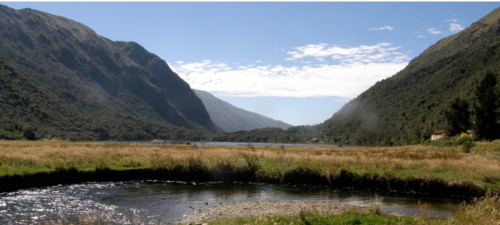2024-08-12 オークリッジ国立研究所(ORNL)
<関連情報>
- https://www.ornl.gov/news/neutrons-reveal-existence-local-symmetry-breaking-weyl-semimetal
- https://pubs.acs.org/doi/10.1021/jacs.2c05665
- https://journals.aps.org/prl/abstract/10.1103/PhysRevLett.127.117201
カゴメ格子磁性ワイル半金属における隠れた局所対称性の破れ Hidden Local Symmetry Breaking in a Kagome-Lattice Magnetic Weyl Semimetal
Qiang Zhang,Yuanpeng Zhang,Masaaki Matsuda,Vasile Ovidiu Garlea,Jiaqiang Yan,Michael A. McGuire,D. Alan Tennant,Satoshi Okamoto
Journal of the American Chemical Published July 28, 2022
DOI:https://doi.org/10.1021/jacs.2c05665
Abstract

Exploring the relationship between intriguing physical properties and structural complexity is a central topic in studying modern functional materials. Co3Sn2S2, a newly discovered kagome-lattice magnetic Weyl semimetal, has triggered intense interest owing to the intimate coupling between topological semimetallic states and peculiar magnetic properties. However, the origins of the magnetic phase separation and spin glass state below TC in this ordered compound are two unresolved yet important puzzles in understanding its magnetism. Here, we report the discovery of local symmetry breaking surprisingly co-emerges with the onset of ferromagnetic order in Co3Sn2S2, by a combined use of neutron total scattering and half-polarized neutron diffraction. An anisotropic distortion of the cobalt kagome lattice at the atomic/nano level is also found, with distinct distortion directions among the two Co1 and four Co2 atoms. The mismatch of local and average symmetries occurs below TC, indicating that Co3Sn2S2 evolves to an intrinsically lattice disordered system when the ferromagnetic order is established. The local symmetry breaking with intrinsic lattice disorder provides new understanding of the puzzling magnetic properties. Our density functional theory (DFT) calculation indicates that the local symmetry breaking is expected to reorient local ferromagnetic moments, unveiling the existence of the ferromagnetic instability associated with the lattice instability. Furthermore, DFT calculation unveils that the local symmetry breaking could affect the Weyl property by breaking the mirror plane. Our findings highlight the fundamentally important role that the local symmetry breaking plays in advancing our understanding on the magnetic and topological properties in Co3Sn2S2, which may draw attention to explore the overlooked local symmetry breaking in Co3Sn2S2, its derivatives and more broadly in other topological Dirac/Weyl semimetals and kagome-lattice magnets.
Co3Sn2S2の異常な交換結合と中温ワイル状態 Unusual Exchange Couplings and Intermediate Temperature Weyl State in Co3Sn2S2
Qiang Zhang, Satoshi Okamoto, German D. Samolyuk, Matthew B. Stone, Alexander I. Kolesnikov, Rui Xue, Jiaqiang Yan, Michael A. McGuire, David Mandrus, and D. Alan Tennant
Physical Review Letters Published 7 September 2021
DOI:https://doi.org/10.1103/PhysRevLett.127.117201
Abstract
Understanding magnetism and its possible correlations to topological properties has emerged to the forefront as a difficult topic in studying magnetic Weyl semimetals. Co3Sn2S2 is a newly discovered magnetic Weyl semimetal with a kagome lattice of cobalt ions and has triggered intense interest for rich fantastic phenomena. Here, we report the magnetic exchange couplings of Co3Sn2S2 using inelastic neutron scattering and two density functional theory (DFT) based methods: constrained magnetism and multiple-scattering Green’s function methods. Co3Sn2S2 exhibits highly anisotropic magnon dispersions and linewidths below , and paramagnetic excitations above . The spin-wave spectra in the ferromagnetic ground state is well described by the dominant third-neighbor “across-hexagon” model. Our density functional theory calculations reveal that both the symmetry-allowed 120° antiferromagnetic orders support Weyl points in the intermediate temperature region, with distinct numbers and the locations of Weyl points. Our study highlights the important role Co3Sn2S2 can play in advancing our understanding of kagome physics and exploring the interplay between magnetism and band topology.



